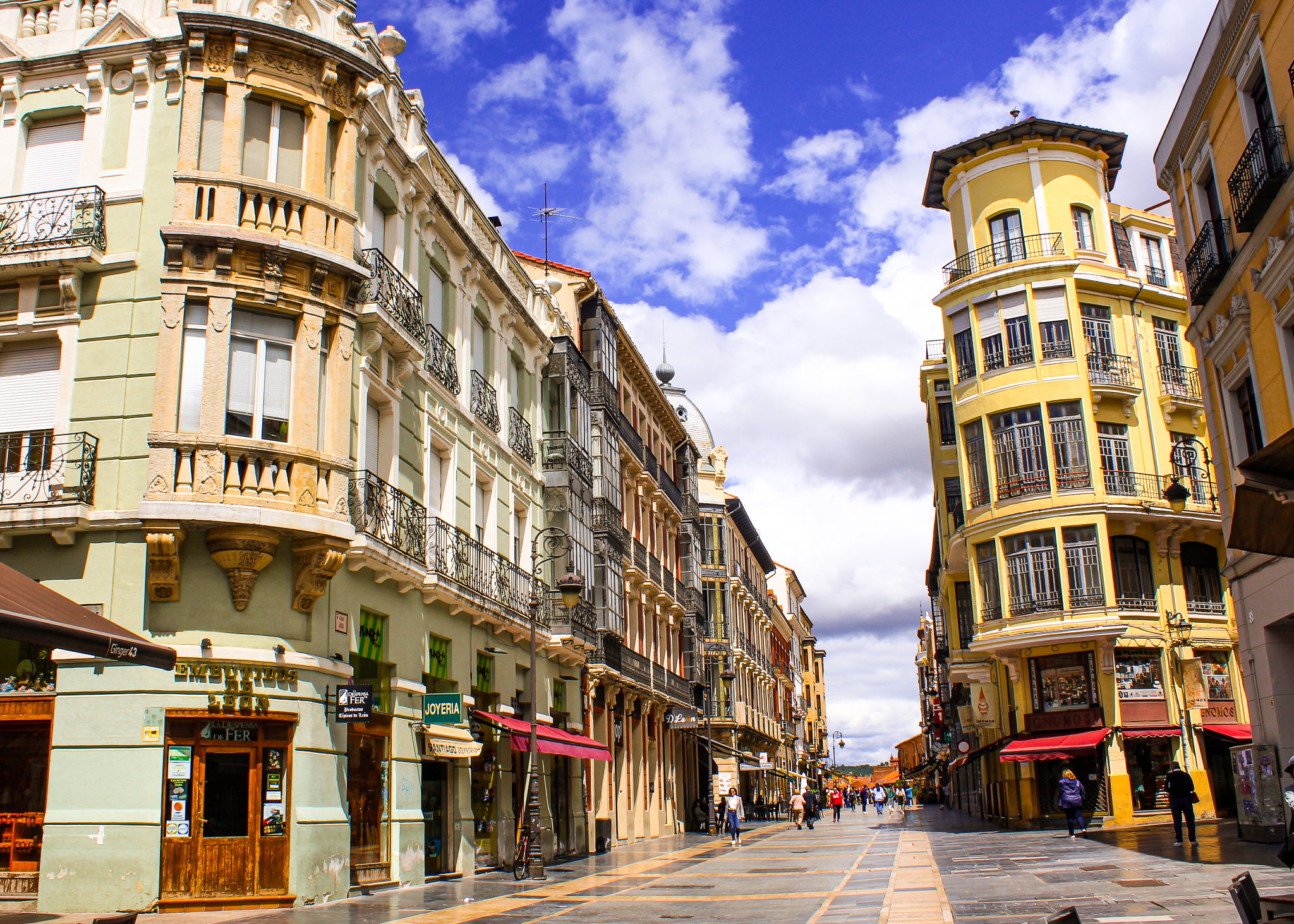Like so many of Spain’s enduring cities, Leon was originally founded by Romans, this time as a camp for the Seventh Legion in AD68.
Around the same time an onyx goblet was taken by Muslims from an early Christian community in Jerusalem, setting in train a journey that would end in Leon in the 11th century.
Whether the bejewelled and beautiful goblet is indeed the Holy Grail, is subject to much intellectual debate, but we had enjoyed discovering it on an earlier visit to the city and its resting place in the Basilica de San Isidoro is a highlight on the Camino de Santiago de Compostela.
Leon’s golden years are intrinsically linked with the ‘reconquista’ of Northern Spain from the occupying Moors of Al Andalus.
Castile and Leon were first bought together under one crown in 1037 by Fernando 1 and the powerful kingdom repelled and reclaimed territories from the Caliphate in the south. Centuries of infighting between royal brothers and sisters formed and reshaped the eventually united kingdom of Castilla y Leon.

In the 16th century, wealth poured into the area from a buoyant wool trade as well as treasures and spoils seized from the expansion of the Spanish Empire into the Americas.
It was then that Leon’s exquisite cathedral was first decorated with the superb stained-glass windows that it is famed for. Santa Maria de Leon is a towering Gothic edifice of towers, spires, minarets and flying buttresses.

We wandered the winding streets of the historical centre in the clear golden light of an evening after work. It was 30 degrees at 7pm and too early for most of the tapas bars to be open in the historical quarters of Barrio Romantico and Barrio Humedo.
Too early too for dinner at one of the many restaurants shuttered up against the arriving groups of weary pilgrims looking to eat and then find a welcome night’s bed. It’s a consideration along the route and must make for long days with early morning starts to benefit from walking in the cooler hours, but with late nights required to be able to eat a meal that is cooked for you.

Tracing the steps of Romans, we headed west to their Asturica Augusta, later called Astorga. It is perched on a plateau with endless views across the green agricultural plains below it reaching to the foothills of the Montes de Leon.
It was an important cultural and administrative centre on the Via de la Plata (Silver Road) and rich in minerals and gold that was mined. The town’s character is influenced by the Maragatos, people probably descended from Carthaginian and Punic slaves brought to work in the mines.

Astorga was an important trading centre for the Maragatos from the 8th century, and until the building of the railways in the 19th century, they were the main transporters of goods between Galician sea ports in the north and Madrid.
Trusted as muleteers they carried goods and personal items in organised caravans, either to send on sea journeys, or to receive and import.
They evidently had a collectively sweet tooth and were best known for purveying sugar and chocolate, hence Astorga is celebrated for its large bars of dark chocolate and tiny sugary biscuits.

We strolled along the impressive town walls, spotting Roman foundations and slumbering cats enjoying under-paw heating on the sun-warmed granite stones.
Also granite, and with a fairy-tale roofline of spires and turrets, the Palacio Episcopal by the Catalan architect Antoni Gaudi took just four short years to complete but was never lived in as its appearance horrified the paying bishops.
The palace stands as right angles to the Gothic cathedral of 1471 with its Plateresque central portal and two towers in strikingly different shades of red stone.

The stone used to build each tower arrived in Astorga more than 200 years apart and from different quarries, hence its unusual and very beguiling look.
It was closed so we opted for a late evening glass of wine and tapas next to a partly covered and excavated Roman villa, complete with a mosaic floor and hypocaust bathing rooms, before heading back to the free night’s camping outside the curved walls of the lower town’s bull ring.















